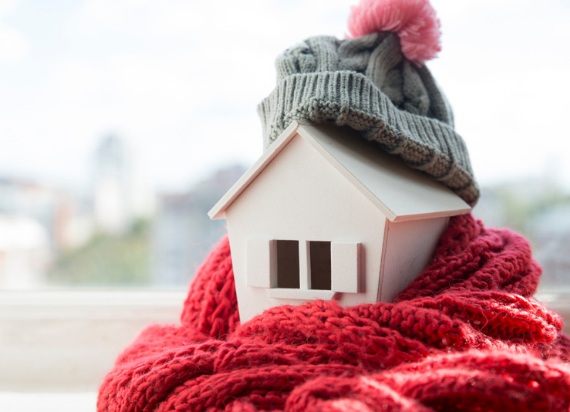4 Myths About Winter Homebuilding Debunked
A few common myths about winter homebuilding circulate every year and can scare off homebuyers who may be wary about building their home during the cold and dreary winter months. Educating your customers about the homebuilding process in every season is key to keeping your business steady throughout the year and getting your customers excited to step into their dream home come spring.
Here are four common myths about winter homebuilding that homebuyers often fear, and the facts you can use to debunk them.
Myth: Winter weather prolongs the construction process
Homebuyers can be apprehensive about building in the winter months due to concerns about weather-related delays and slow workmanship. These concerns might be even more prevalent for homebuyers originally from warmer climates, now building their new home in North America.
Fact: All seasons have unpleasant weather to deal with
Despite the fear of blizzards and hail storms, winter weather isn’t actually the powerful stopping force many people think it is. Winter poses little to no additional threats than any other season. In fact, many builders prefer snow and colder weather to heavy rain or hot humid days during the construction process. In most cases, tarps can be put on exposed wood to avoid snow melting into it and work can be moved to the exterior with an indoor heater if temperatures outside fall too low.
Although building professionals would probably prefer perfect sunny and 75 days every day, they understand that dealing with the elements of nature comes with the territory of their job. Homebuilders are a resilient group and know they must do their job well and deliver the end product on-time, regardless of weather conditions.
Myth: Cold weather damages and weakens lumber
Snow, sleet, hail, ice, frigid temperatures; It’s clear to see why homebuyers might be apprehensive about the bare bones of their home being exposed to the winter elements. The biggest problem with damaged lumber is the swelling effect of excessive moisture. If wood contains too much it expands. A few months after the house is built, the wood will eventually lose the excess moisture and shrink back down to size. This may cause nail popping, wood floor buckling, upward bowing of wood trusses, and other problems if the shrinkage is extreme.
Fact: Builders have procedures to protect framing from the elements
The lumber industry has created effective methods for the milling process that prevent the damaging effects of poor weather. Framing lumber is kiln-dried, then delivered to the building site with only 18-19% moisture content. This procedure is used year-round, but is actually more necessary during rainy, humid spring and summer months when more moisture is in the air and rain is more likely to soak the wood.
Homes under construction during winter are normally heated to help absorb moisture. During cold, low-humidity winter days the drying process is sped up naturally, and snow can be removed before it melts, unlike rain. Homebuilders that work in cold climates also have techniques to keep unused building materials protected, so weakened lumber shouldn’t be an issue.
Myth: Concrete use for winter building has additives that reduce its strength
Concrete takes longer to set in cold weather, so calcium chloride is added to accelerate the curing process. The common belief is that this chemical has adverse effects on the concrete’s strength, making it more susceptible to cracking.
Fact: Additives in concrete do not make it weaker
Concrete with calcium chloride is comparable in strength to concrete without. In fact, studying the effects of CaCl2 goes back to at least the 1920s and 1930s. Concrete with calcium chloride meets building code requirements and has been used successfully in building for ages.
One area that may cause more legitimate concern is the inability to pour concrete during extremely low temperatures, but this obstacle can be overcome by using straw and other warming measures or simply waiting for the cold front to pass.
Myth: Winter homebuilding is more expensive than other seasons
Some homebuyers may believe that materials are more expensive in the winter due to scarcity and that additional measures to keep the site and workers warm will run up the bill.
Fact: Winter building is as expensive as other seasons and may even cost less
Winter building does come with some additional expenses such as charges for topsoil or clay, and blankets and ground heaters, but these costs are minuscule compared to the overall expense of the build. And the belief that materials are more expensive in the winter is simply untrue; Builders are actually more likely to receive discounts on lumber during the winter because it’s a slow time of year for lumber mills. Also, material and labor prices normally increase in the spring when the bulk of builders start to stock up for the busy season, so building in the winter could actually save money.
If you have homeowners on the fence of a winter build be sure to address their concerns and assure them winter homebuilding is just as successful as building any other time of year.
Want to be a builder that
homeowners can trust?
Avid Insights Team
